SANGUINE ROOT STAFF TASKED WITH MAPPING SPECIES ARALIA ELATA IN MORRIS PARK. OVER THIRTY DISTINCT POPULATIONS FOUND PARK-WIDE. Â SPECIMEN COUNTS INTO THE THOUSANDS AT SOME SITES.

We were charged with the task of mapping out the populations of  the invasive exotic  Japanese angelica tree, Aralia elata, so that the eradication strategy can be done as efficiently as possible, targeting the populations that threaten crucial areas of the park first. These populations would be the ones threatening the least disturbed areas of the Park. These areas get the highest priority of protection.
On this past Friday’s Aralia elata eradication work-day, we were awakened to the alarming expansion rate of this species. Isabelle astutely asked “how old are these trees?” We counted the rings of  a specimen stump we cut in preparation for the triclopyr herbicide , and we got the answer. The specimen, approximating two inches in diameter at the base was not even 10 years old.
The large area we were trying to eradicate was young.
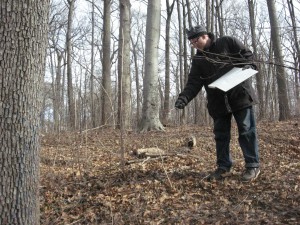
We decided to make a day of it and map out all of the populations we could find. We were surprised to find large populations that we had not previously noticed. In the picture to the left, we found a small grouping of this invasive exotic growing adjacent to site v-79a, designated a high-quality forest site with a high priority of protection by the Fairmount Park Master Plan. This, in our estimation, should be given priority status in eradication.
The mapping exercise was a fun and educational way to spend a sunday afternoon. Â It was like going for a walk in the woods with a purpose. As we drew our map, our understanding of the park was expanded greatly and we became very aware of the park’s relationship to the species Aralia elata. We noticed that the largest populations tend to grow further from the creek on drier land. We also noted that when there is one noticeable specimen, there can be many smaller ones to be found. This helped us count the populations as we became familiar with the growth habits of groupings of different sizes.
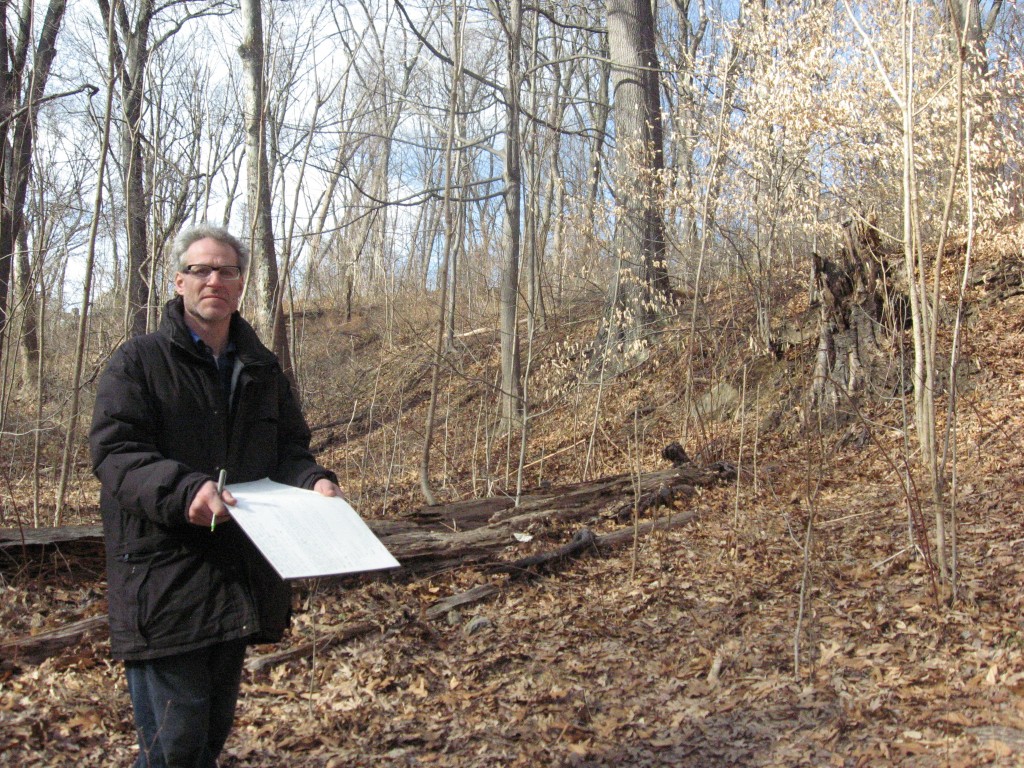
We also became familiarized with the shape, color and habit of the species, to the point where we could spot even a small one from a distance. We trained ourselves over the past few weeks.
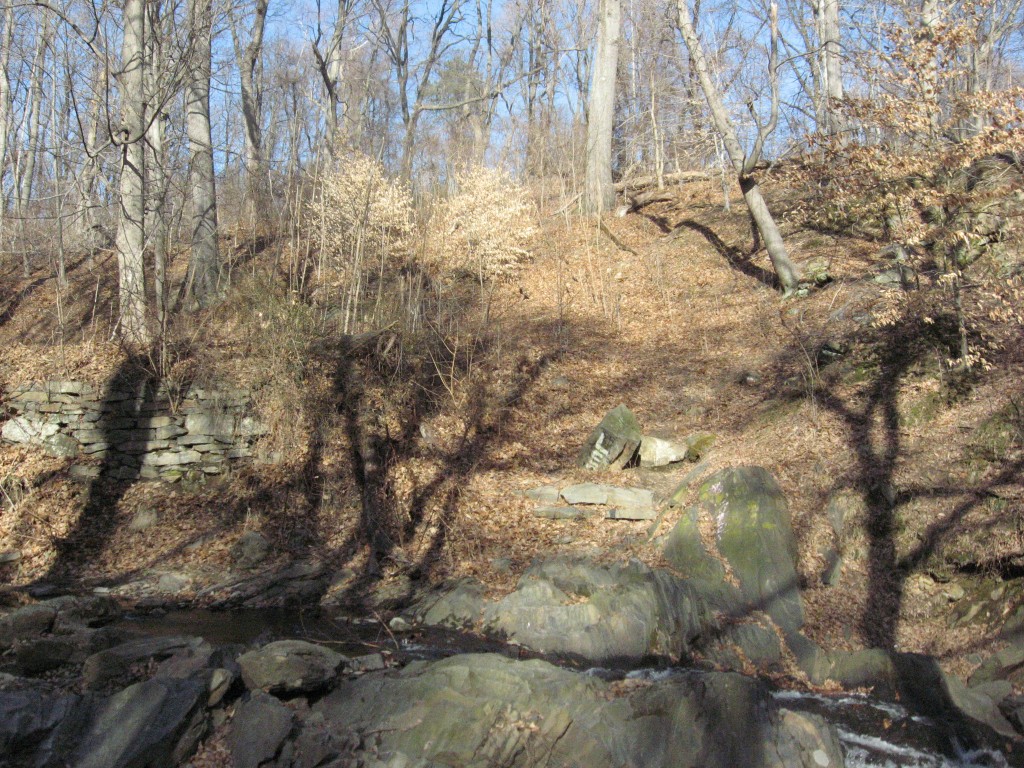
Even with the 30+ populations we discovered, and the numerous specimens to be eradicated, we are optimistic of the eventual eradication of this species from Morris Park.  So far, in just one day, we made a serious effort at eradication of 2 populations approximating 500 specimens. With this in mind, the possibility of a complete map and an eradication blueprint that can be completed with the aid of Fairmount Park and  community volunteers, could be attained.  The importance of this accomplishment will not only benefit Morris Park, but any natural areas nearby and the environment as a whole as this problematic species is addressed.
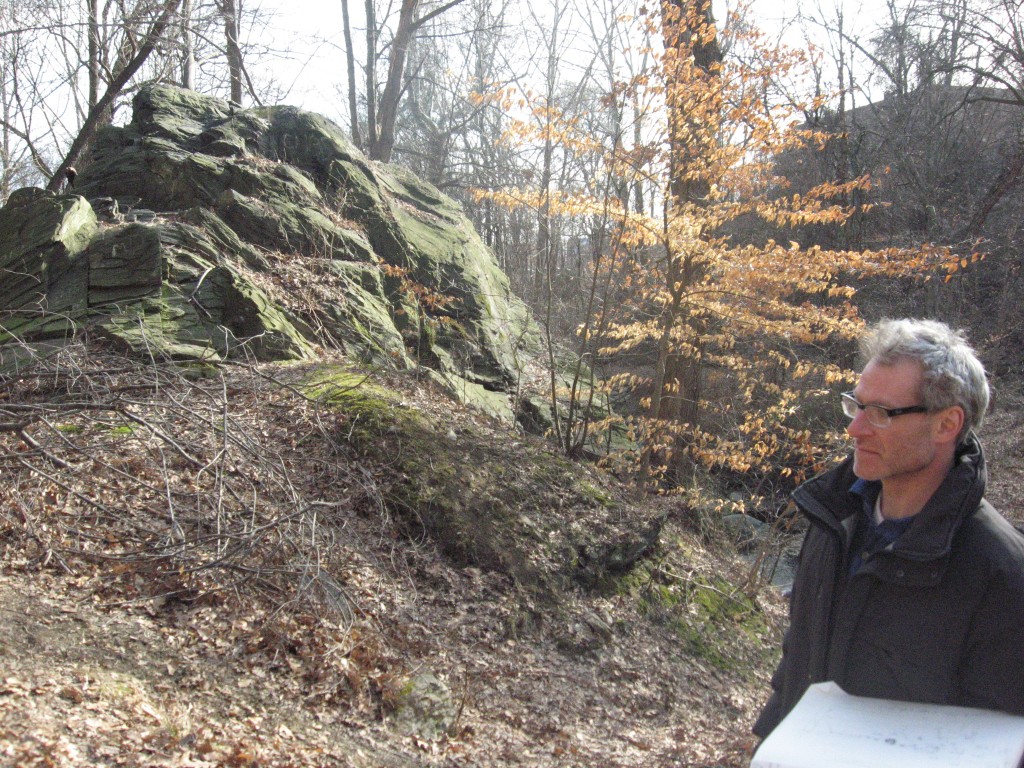
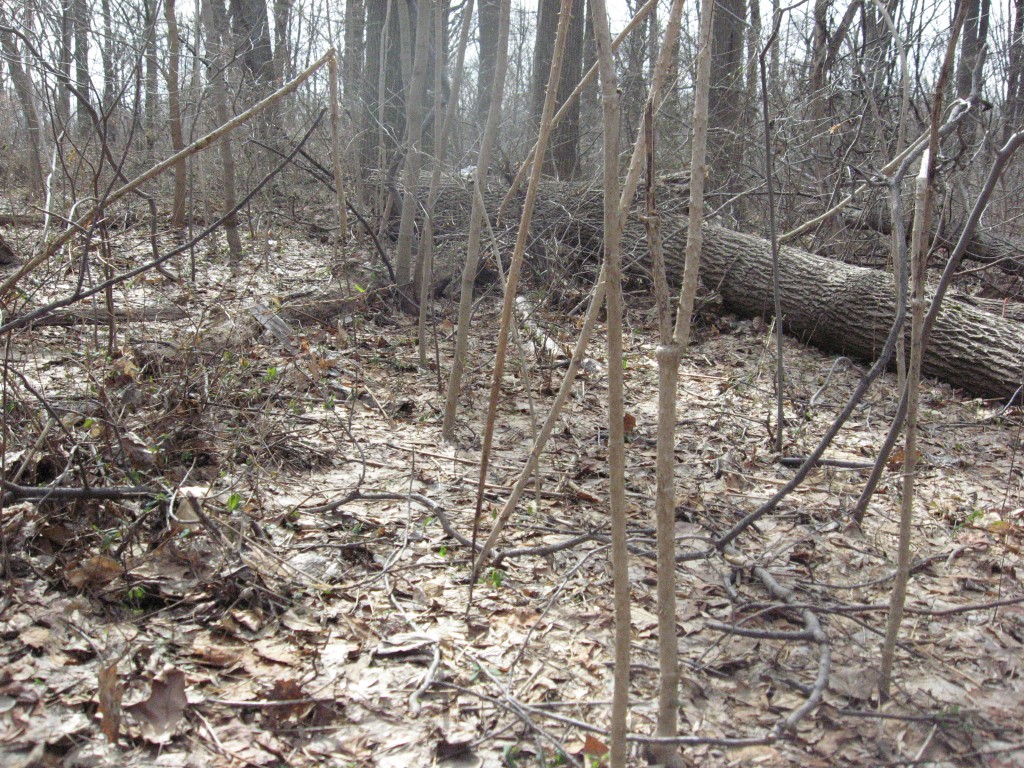
The Sanguine Root staff urges that eradication of this emerging invasive species be prioritized. The dense stands of Aralia elata have not yet completely crowded out the native species in their shared areas, and the populations have not yet become widespread in their potential habitats, like so many other invasives in Morris Park. Â However, judging from the spreading habit and rate of increase, this species presents a threat to Morris Park’s upland areas and well-drained hillsides, where some of the most diverse and high quality forested areas are present.
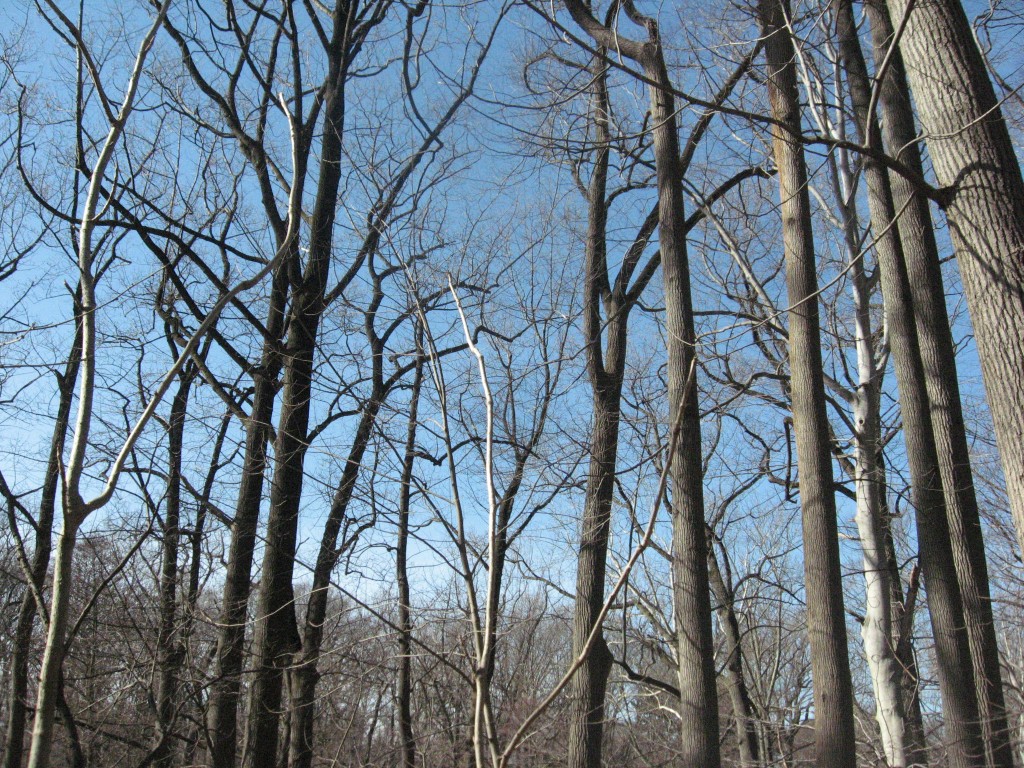
Please be sure to visit our mapping efforts on our website. We will be continuing to improve the map, and update the status and exact locations of individual specimens and populations. We will also be uploading a photograph of each site when it is appropriate.


